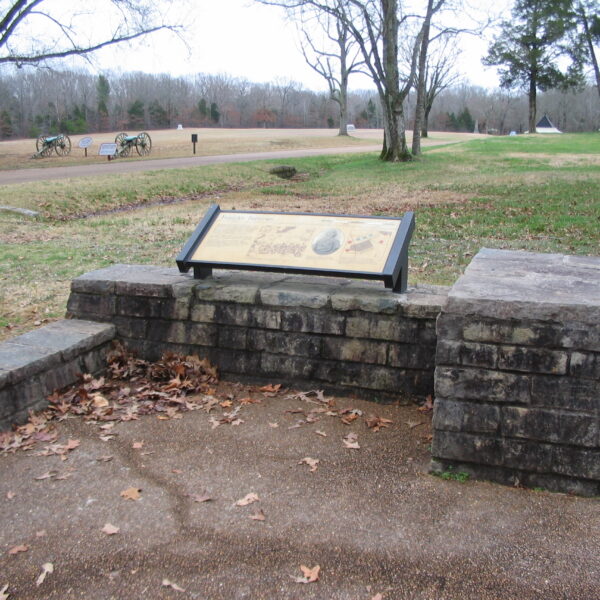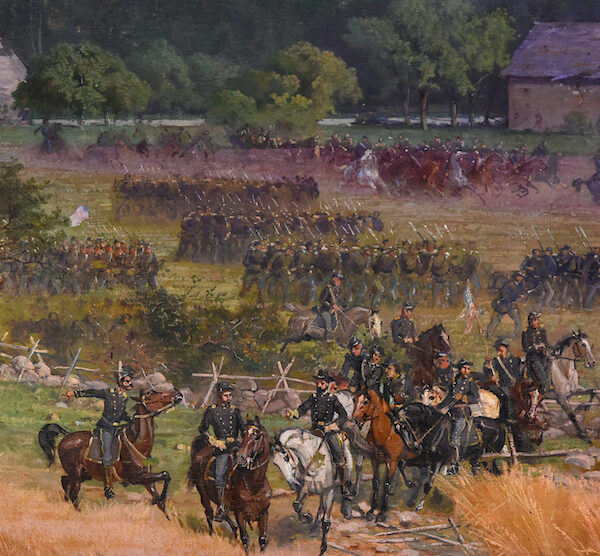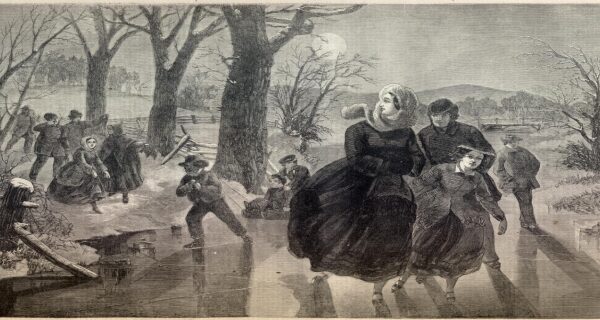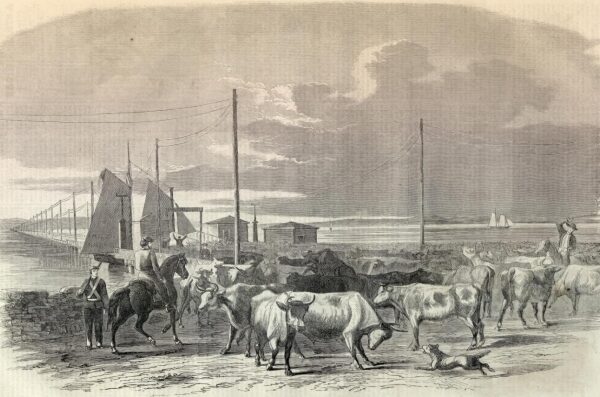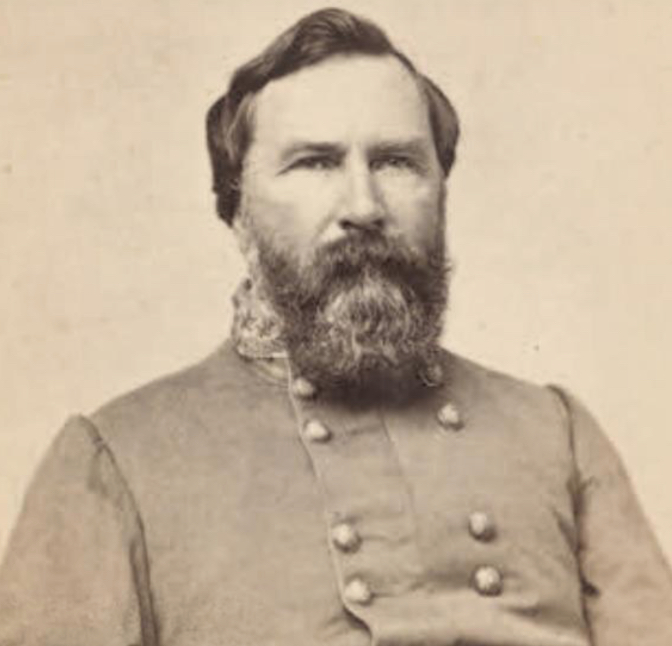
Confederate corps commander James Longstreet
Literature on the Army of Northern Virginia contains book-length testimony from four of the seven officers who commanded its infantry corps. These titles include memoirs by James Longstreet, Jubal Anderson Early, and John Brown Gordon and an annotated edition of Richard Stoddert Ewell’s correspondence. This published evidence from the four generals reveals a great deal about their personalities, the army’s battles and campaigns, and postwar wrangling about Confederate military affairs.
From Manassas to Appomattox: Memoirs of the Civil War in America (J.B. Lippincott, 1896) offers Longstreet’s final word about his wartime service. The book followed years of bitter exchanges with Early and other Lost Cause advocates and added to previous accounts Longstreet had contributed to The Annals of the War Written by Leading Participants North and South (1879) and Battles and Leaders of the Civil War (1887). Deeply attached to the First Corps, Longstreet sought, probably with Gettysburg uppermost in mind, “to relieve its brave men and officers from unjust aspersions” intended to hold them and their chief “responsible for all adversity that befell the army.” A strong current of reconciliation also pervades From Manassas to Appomattox. “I can see the asperities of the great conflict softened,” Longstreet observes, “its passions entering upon the sleep of oblivion…. I believe there is to-day, because of the war, a broader and deeper patriotism in all Americans.”
The book’s praise for Ulysses S. Grant, a close friend of Old Pete’s, and especially its depiction of Robert E. Lee at Gettysburg,
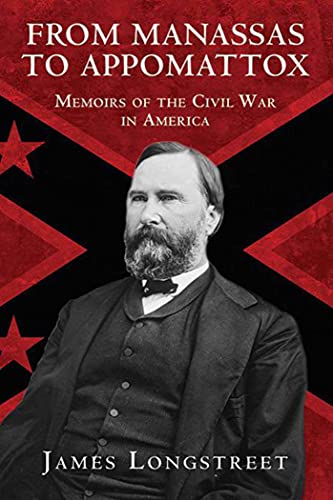
raised hackles across the South. “As the world continues to look at and study the grand combinations and strategy of General Grant,” Longstreet asserts, “the higher will be his award as a great soldier. Confederates should be foremost in crediting him with all that his admirers so justly claim, and ask at the same time that his great adversary be measured by the same high standards.” Nothing triggered more wrath among Lost Cause adherents than one incendiary sentence about Lee at Gettysburg: “That he was excited and off his balance was evident on the afternoon of the 1st, and he labored under that oppression until enough blood was shed to appease him.”
Longstreet’s book abounds with iconic moments, many of which underscore his bond with Lee. At the close of fighting at Antietam, on September 17, 1862: “General Lee walked up as I dismounted, threw his hands upon my shoulders, and hailed me with, ‘Here is my old war-horse at last!’” At Gettysburg just before the grand Rebel assault on the afternoon of July 3, 1863: “Pickett said, ‘General, shall I advance?’ The effort to speak the order failed, and I could only indicate by an affirmative bow.” At the Widow Tapp farm on May 6, 1864, after Lee had ridden into danger near the front lines: “[W]ith my compliments … [I suggested] that his line would be recovered in an hour if he would permit me to handle the troops, but if my services were not needed, I would like to ride to some place of safety, as it was not quite comfortable where we were.” And on April 8, 1865, when Brigadier General William N. Pendleton asked Longstreet to inform Lee that many of his subordinates supported surrender: “Much surprised, I turned and asked if he did not know that the Articles of War provided that officers or soldiers who asked commanding generals to surrender should be shot, and said,—‘If General Lee doesn’t know when to surrender until I tell him, he will never know.’”
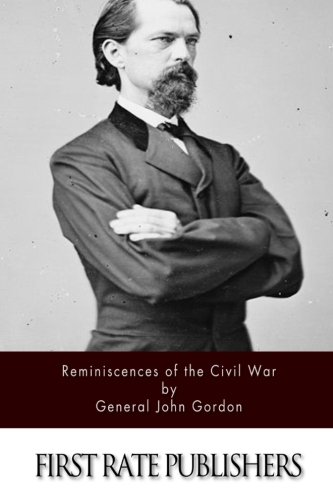
Gordon’s Reminiscences of the Civil War (Charles Scribner’s Sons, 1903) reminds readers that its author probably greeted every new day thinking, “What about me?” The youthful Georgian, who succeeded Early in command of the Second Corps, dramatically narrates his exploits from First Bull Run through Appomattox and lingers on incidents at Antietam and Gettysburg, at the Wilderness and Spotsylvania, in the 1864 Valley Campaign, and at Appomattox. Gordon’s skill as a nonprofessional who rose through the ranks on merit cannot be disputed, but his penchant for self-promotion and embellishment encourages skepticism about his claims regarding the “Gordon-Barlow” exchange at Gettysburg and other incidents. The book’s problematic qualities aside, readers can glean valuable details about Gordon’s role on numerous battlefields and enjoy quotable observations about other officers.
Reminiscences of the Civil War features both Lost Cause and Reconciliation Cause strands of Civil War memory. Examples of the former include bogus claims that “General Lee distinctly ordered Longstreet to attack early the morning of the second day” at Gettysburg and “died believing (the testimony on this point is overwhelming) that he lost Gettysburg at last by Longstreet’s disobedience of orders.” Yet Gordon does not dismiss the centrality of slavery to secession and war, as did so many Lost Causers, acknowledging “that had there been no slavery there would have been no war.” He also crosses literary swords with Early, heavily criticizing his actions in the Wilderness and at Cedar Creek. Reconciliationist language appears throughout the book, most notably in the final chapter. Although Lee towers over all other figures, Gordon accords Grant a fair measure of praise and closes with a paean to the reunited nation. “The unseemly things which occurred in the great conflict between the States should be forgotten,” he insists, “or at least forgiven, and no longer permitted to disturb complete harmony between North and South.”
The Letters of General Richard S. Ewell: Stonewall’s Successor (University of Tennessee Press, 2012), edited by Donald C. Pfanz, reveals a complex, and in many ways sympathetic, figure too often caricatured as almost weirdly eccentric. Pfanz’s annotation enhances letters that cover the full arc of Ewell’s career from West Point to the Mexican War, through deployments in the antebellum Southwest, and into the Civil War and its aftermath.
Although readers mainly interested in descriptions of Civil War battles might find the letters disappointing, Ewell’s correspondence
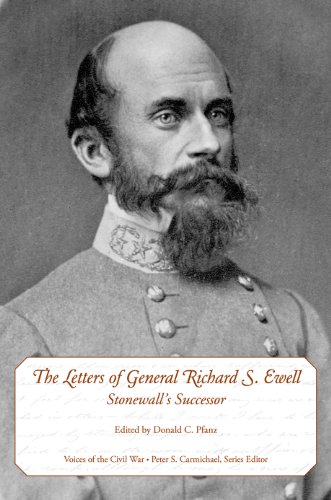
sheds light on a range of topics. Frustrations of service in the Old Army figure in many letters, as does the camaraderie that developed among its officers. “Every one here is on the tenter hooks of impatience to know what the Southern States will do,” he wrote from Albuquerque in late January 1861: “Officers generally are very much averse to any thing like civil war, though some of the younger ones are a little warlike. The truth is in the army there are no sectional feelings and many from extreme ends of the Union are the most intimate friends.” In June 1865, while imprisoned at Fort Warren (he had been captured at Sailor’s Creek on April 6), Ewell observed that he “had everything to lose & nothing to gain” in leaving the army in 1861: “All my hopes of ease & quiet for the future were sacrificed when with regret I took my course.”
A letter dated July 20, 1862, contains the most surprising passage. More than two years before the Confederacy seriously considered arming enslaved men, Ewell pronounced it “astonishing to me that our people do not pass laws to form Regiments of blacks. The Yankees are fighting low foreigners against the best of our people, whereas were we to fight our negroes they would be a fair offset & we would not as now be fighting kings against men to use a comparison from Chequers.”
Ewell’s uneven record at Gettysburg and in the Overland Campaign persuaded Lee to ease him out of the army. Lee’s pretext was his lieutenant’s health, which had been problematic after he lost a leg at Groveton in August 1862 and caused a temporary departure from corps headquarters in May 1864. Ewell quoted Lee’s saying of him that “To report for duty now would be to expose my life & health without corresponding advantages.” “I shall answer,” Ewell informed his wife, “that I am as fit for duty as since I started & that unless my connection with this Army is permanently dissolved I shall remain here untill changes may make it proper to restore me to command.” Lee brushed him off, retained Early in charge of the Second Corps, and relegated “Old Bald Head” to a diminished role in Richmond for the rest of the war.
Early was the first senior officer on either side to write his memoirs. In the summer of 1865, he fled the country with stops in Havana, Mexico, and ultimately Toronto. By May 1866, he had completed a draft for A Memoir of the Last Year of the War for Independence, in the Confederate States of America, Containing an Account of the Operations of His Commands in the Years 1864 and 1865 (Lovell and Gibson, 1866). Before he left Canada in 1869, Early finished a full memoir but chose not to publish it. Eighteen years after his death in 1894, his niece Ruth Hairston Early edited the work for publication as Lieutenant General Jubal Anderson Early, C.S.A.: Autobiographical Sketch and Narrative of the War between the States (J.B. Lippincott, 1912). The earlier book’s text, in almost verbatim form, filled the last 21 chapters of the larger memoir.
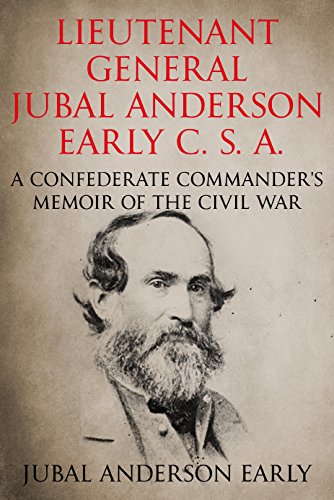
Letters from Lee in November 1865 and March 1866 influenced Early’s approach in A Memoir of the Last Year of the War. Lee solicited information about the Overland Campaign and operations during 1864–1865 in the Shenandoah Valley, including “statistics as regards numbers, destruction of private property by the Federal troops, &c.” Preoccupied with “the odds against which we fought,” Lee predicted it would “be difficult to get the world to understand” the Union’s advantage in men and matériel. Early’s first memoir responded precisely to Lee’s queries regarding chronological coverage and attention to numbers, while also embracing the commanding general’s goal of influencing future understanding of the Confederate war effort. Lee identified as his “only object … to transmit, if possible, the truth to posterity, and do justice to our brave Soldiers.” Early stipulated, in replying to Lee, that “the most that is left to us is the history of our struggle, and I think that ought to be accurately written.”
Autobiographical Sketch and Narrative consists of roughly equal parts recollection and descriptive military history. More trustworthy and less marred by special pleading than the memoirs of John Bell Hood or Joseph E. Johnston, it is meticulously detailed and mounts a strong defense of Early’s decisions in the Valley and elsewhere. The notoriously sarcastic, irreligious, and profane Early also displayed a refreshing sense of self-awareness. “I was never blessed with popular or captivating manners,” he conceded, adding unequivocally, “I was never what is called a popular man.”
Early’s two memoirs contain strong opinions but none of the anti-Longstreet venom for which he later became famous. Completed before the eruption of the Gettysburg controversies of the 1870s, they did anticipate later Lost Cause emphases by devoting close attention to relative numbers (only Walter H. Taylor’s works proved more influential among former Confederates in this respect), casting Lee as a nearly perfect soldier, and castigating Federals for depredations against Confederate civilians. Early justified the burning of Chambersburg, Pennsylvania, by some of his cavalry in July 1864: Because a “number of towns in the South, as well as private country houses, had been burned by the Federal troops. I came to the conclusion it was time to open the eyes of the people of the North to this enormity, by an example in the way of retaliation.”
All these books remain in print—the memoirs in paperback with scholarly introductions—and belong on any short shelf of primary accounts relating to the Army of Northern Virginia. The next installment of this series will drop down one level of command to feature three superior sets of letters from officers who led divisions.
GARY W. GALLAGHER IS THE JOHN L. NAU III PROFESSOR OF HISTORY EMERITUS AT THE UNIVERSITY OF VIRGINIA. HIS PUBLICATIONS INCLUDE THE ENDURING CIVIL WAR: REFLECTIONS ON THE GREAT AMERICAN CRISIS(LSU PRESS, 2020).
This article appeared in the Summer 2022 issue (Vol. 12, No. 2) of The Civil War Monitor.
Read other installments in this series:
Part 1: Foundational Works
Part 2: Artillerists
Part 3: European Observers
Part 5: Division Commanders
Part 6: Managing the Cavalry
Part 7: Robert E. Lee

